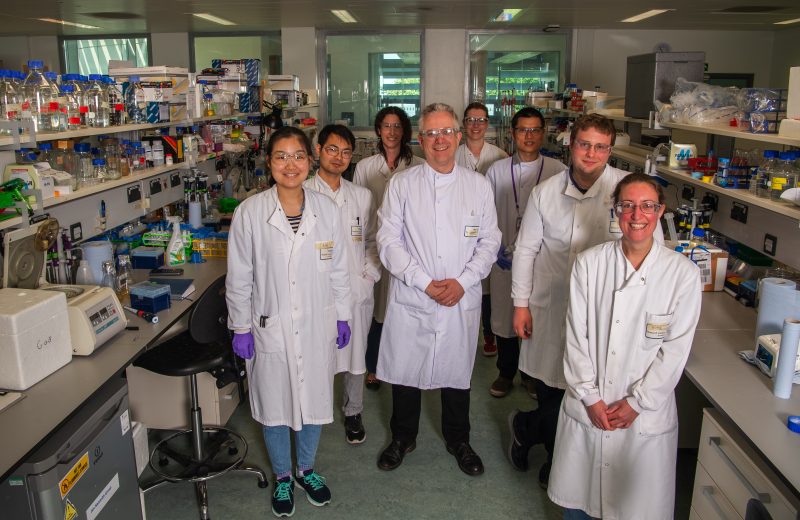Professor James Naismith’s team will work closely with researchers from the University of Cardiff to use state-of-the-art technology to obtain time-lapse footage of enzymes catalysis. This innovation would allow scientist to first time visualise changes in the enzyme as the reaction occurs. The ability to visualise this would give us vital information, which would allow us to re-engineer the enzyme and potentially speed the production of anti-viral compounds.
Currently, researchers are able to view the structures the enzyme prior to catalysis and the shape of the enzyme once the substrates are attached but are unable to view the transitions of shape that occur during this catalysis. Understanding the transitions in shape are critical be able to better understand the enzyme’s function and to be able to re-engineer them in a quick and efficient way. This could have future implications for drug development and discovery.
The researchers try to visualise this enzyme catalysis using the X-ray free electron laser (X-FEL) located in Hamburg, Germany. The X-FEL can fire X-ray pulses lasting a femtosecond, which is one quadrillionth of a second. This will allow researchers to observe the bonds forming atoms, as the formation of these bonds takes 10 femtoseconds. Meaning that the X-FEL will allow the team to observe changes in the shape of the enzyme as these bonds form.

“We’re essentially creating a freeze frame movie of chemistry in action,” said project co-lead investigator Professor Nigel Richards from Cardiff University’s School of Chemistry. “Chemical bonds form and break in very short periods of time, far too fast to be seen using other techniques. The new X-FEL technology offers a solution to this problem for enzyme catalysed chemical reactions.”
The team will begin by focusing their work on a Streptomyces’ enzyme, this bacteria is commonly found in soils and decaying vegetation. However, the bacteria also plays an important role in human health as it is responsible for the productions of two-thirds of natural, clinically-useful antibiotics. The particular enzyme being used meditates the construction of bond between two carbon atoms, which is the most basic chemistry of life.
Understanding the formation of this carbon-carbon bond is potentially significant for the creation of new antiviral drugs, as it is present in a class of molecules known as C-nucleosides. One example of a C-nucleoside is remdeisvir developed by Gilead Sciences, Inc., which is currently being trialled as a potential treatment for COVID-19.
“Carbon carbon bond formation is at the heart of the chemistry that makes new drug molecules. Medicinal chemists are always looking for more efficient and less polluting ways to do this. It has always been the dream of enzymologists to watch a reaction in real time. It’s a very ambitious high risk project and needs expertise from both the Franklin and University of Cardiff to even attempt it.” say Professor James Naismith.